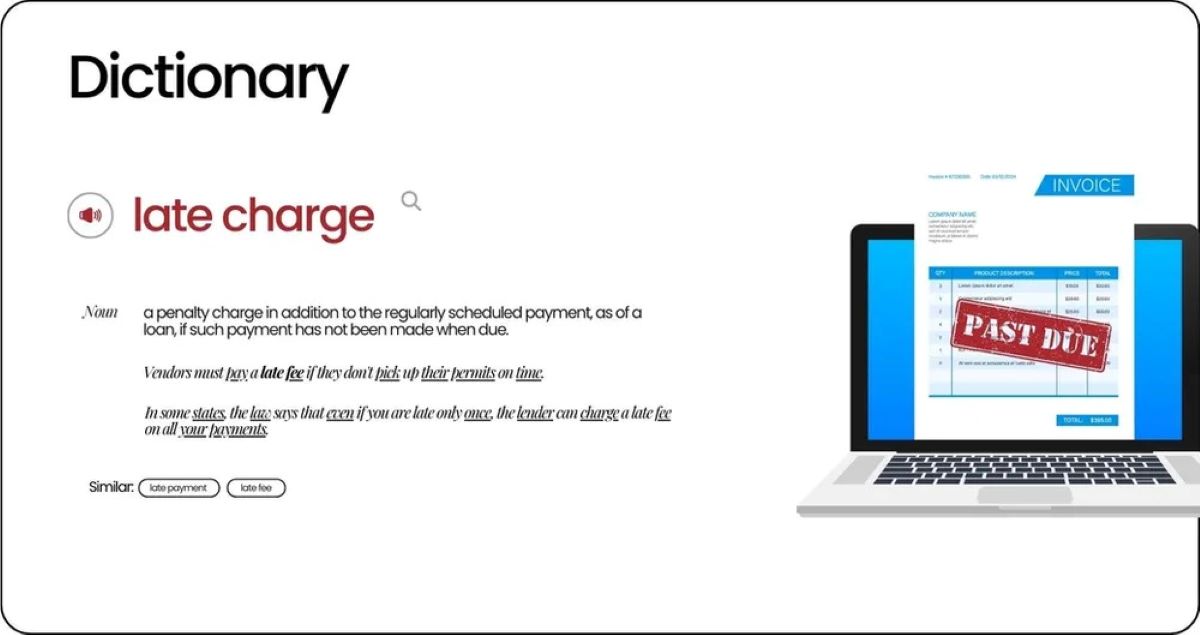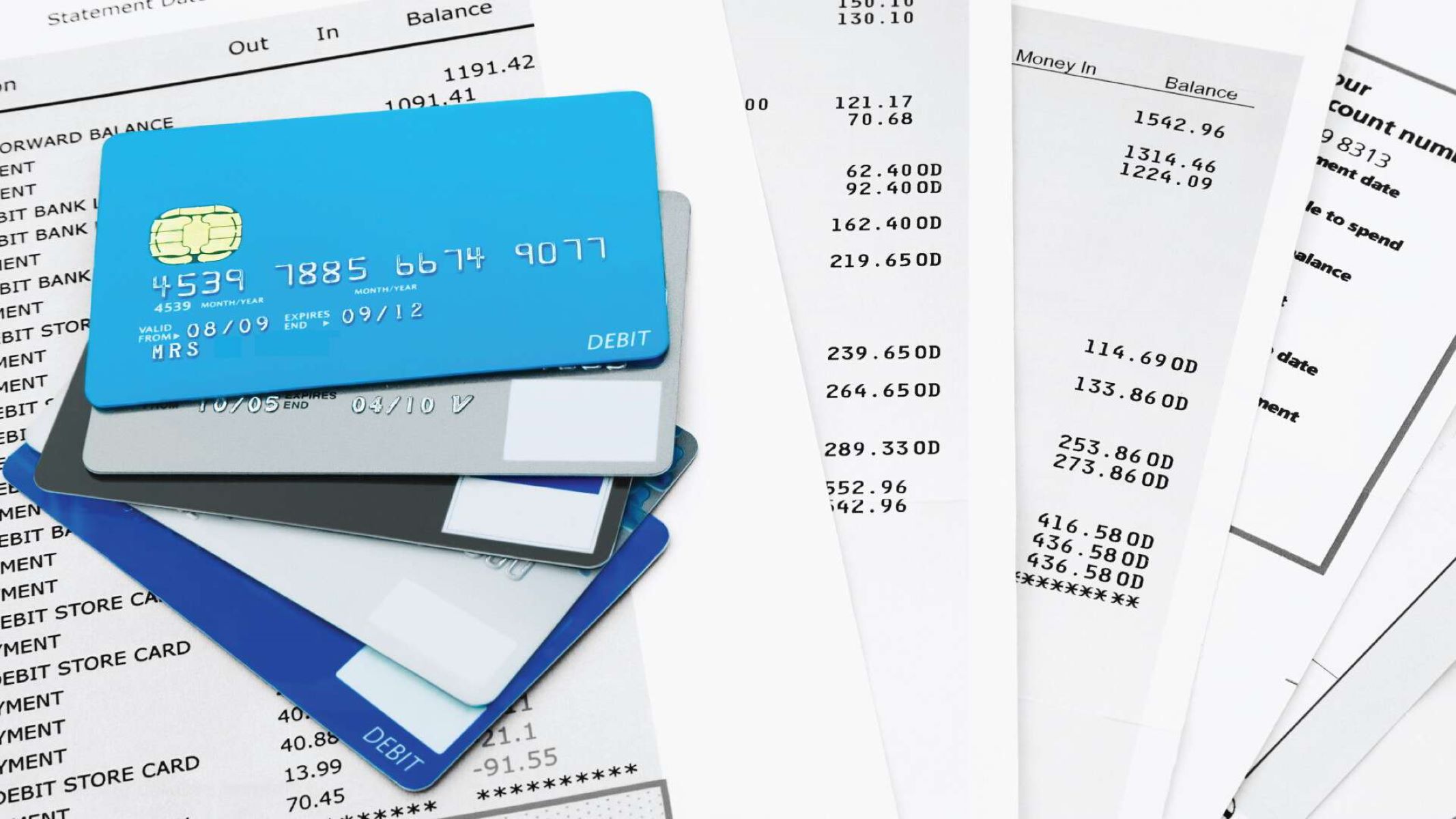Home>Finance>How Many Days Before Credit Card Statement Closing Date Credit Utilization Low


Finance
How Many Days Before Credit Card Statement Closing Date Credit Utilization Low
Published: March 6, 2024
Learn how to manage your credit card utilization and improve your financial health by understanding the impact of your credit card statement closing date on your credit score. Discover the ideal timing to lower your credit utilization before the statement closing date to optimize your finances.
(Many of the links in this article redirect to a specific reviewed product. Your purchase of these products through affiliate links helps to generate commission for LiveWell, at no extra cost. Learn more)
Table of Contents
- Understanding the Dynamics of Credit Card Statement Closing Date and Credit Utilization
- Deciphering the Significance of the Credit Card Statement Closing Date
- Signifying the Impact of Credit Utilization on Credit Health
- Unveiling the Benefits of Maintaining Low Credit Utilization
- Exploring the Determinants of Credit Utilization and Their Implications
- Strategic Timing for Managing Credit Utilization in Anticipation of the Statement Closing Date
- Empowering Financial Wellness Through Effective Credit Utilization Management
- Elevating Financial Health Through Informed Credit Utilization Management
Introduction
Understanding the Dynamics of Credit Card Statement Closing Date and Credit Utilization
Credit cards have become an integral part of modern financial management, offering convenience and flexibility in handling transactions. However, the nuances of credit card usage can significantly impact an individual's financial standing. One such crucial aspect is the credit card statement closing date and its correlation with credit utilization.
Understanding the intricacies of credit card statement closing date and credit utilization is essential for maintaining a healthy credit profile. Credit utilization, which refers to the amount of credit being used in relation to the total available credit, plays a pivotal role in determining an individual's credit score. Moreover, the timing of credit utilization in relation to the credit card statement closing date can have a substantial impact on the reported utilization rate.
In this comprehensive guide, we will delve into the significance of credit utilization, the implications of maintaining low credit utilization, and the optimal timing for managing credit utilization in relation to the credit card statement closing date. By gaining insights into these aspects, individuals can make informed decisions to effectively manage their credit utilization, thereby safeguarding their financial well-being.
Understanding Credit Card Statement Closing Date
Deciphering the Significance of the Credit Card Statement Closing Date
The credit card statement closing date holds a pivotal role in the credit card billing cycle. It marks the end of the billing period and initiates the process of generating the monthly statement. This date is crucial as it determines the snapshot of the account that will be reported to credit bureaus. Any balances, payments, and transactions within this timeframe will be reflected in the upcoming statement.
It is important to note that the statement closing date is distinct from the payment due date. While the payment due date signifies the deadline for settling the outstanding balance to avoid incurring interest or late fees, the statement closing date influences the credit utilization ratio reported to credit agencies. This ratio is calculated by dividing the total outstanding balance by the total credit limit, and it significantly impacts an individual’s credit score.
Furthermore, understanding the statement closing date empowers cardholders to strategically time their credit utilization. By managing spending and payments around this date, individuals can influence the reported utilization rate, thereby optimizing their credit profile. This knowledge is particularly valuable for those aiming to improve their credit score or seeking to present a favorable financial image to lenders and creditors.
As such, comprehending the implications of the credit card statement closing date is instrumental in effective credit management. It provides individuals with the foresight to plan their financial activities in a manner that aligns with their credit goals and overall fiscal well-being.
Importance of Credit Utilization
Signifying the Impact of Credit Utilization on Credit Health
Credit utilization, often referred to as the credit utilization ratio, holds substantial weight in the determination of an individual’s creditworthiness. This metric is a reflection of how much of the available credit a person is using, and it is a critical factor in calculating credit scores. Lenders and financial institutions consider credit utilization as a key indicator of responsible financial behavior and prudent credit management.
When individuals maintain a low credit utilization ratio, typically below 30%, it signals to creditors that they are using credit responsibly and not overly reliant on borrowed funds. This can bolster their creditworthiness and enhance their eligibility for favorable loan terms, higher credit limits, and competitive interest rates. Conversely, a high credit utilization ratio may raise concerns among lenders, as it suggests a greater likelihood of financial strain or inability to manage credit effectively.
Moreover, credit utilization directly impacts credit scores, with lower utilization contributing positively to a higher score. By keeping credit utilization in check, individuals can proactively safeguard and improve their credit standing, paving the way for improved financial opportunities and stability. This underscores the significance of monitoring and managing credit utilization as a fundamental aspect of prudent financial planning.
Recognizing the importance of credit utilization empowers individuals to make informed decisions regarding their credit usage, thereby fortifying their financial foundation and fostering a positive credit trajectory. As such, maintaining a favorable credit utilization ratio is instrumental in nurturing a robust credit profile and establishing a solid financial reputation.
Impact of Low Credit Utilization
Unveiling the Benefits of Maintaining Low Credit Utilization
Low credit utilization signifies that an individual is prudently managing their available credit, which can yield various advantages in the realm of personal finance. When individuals consistently maintain a low credit utilization ratio, typically below 30%, they exhibit responsible credit management practices that can have a positive impact on their financial well-being.
One of the primary benefits of low credit utilization is its favorable influence on credit scores. By keeping credit utilization low, individuals can potentially elevate their credit scores, as it demonstrates restraint and fiscal responsibility. This, in turn, enhances their creditworthiness and may lead to more favorable terms on loans, mortgages, and credit cards, ultimately saving them money in the form of lower interest rates and fees.
Furthermore, maintaining low credit utilization can instill confidence in creditors and lenders, positioning individuals as less risky borrowers. This can open doors to enhanced financial opportunities, such as access to higher credit limits, better loan terms, and increased approval odds for credit applications. Additionally, it can contribute to a positive perception of financial stability, which is valuable when seeking to secure housing, employment, or insurance.
Beyond its impact on credit scores and financial opportunities, low credit utilization also provides a sense of security and control over one’s financial obligations. By refraining from maxing out credit lines and managing balances prudently, individuals can mitigate the risk of accumulating unmanageable debt and experiencing financial strain. This fosters a healthier financial outlook and reduces the likelihood of encountering credit-related challenges in the future.
In essence, the impact of maintaining low credit utilization extends beyond numerical credit scores; it encompasses a spectrum of financial benefits that can enhance individuals’ overall financial standing and resilience. By embracing low credit utilization as a cornerstone of their financial strategy, individuals can cultivate a solid foundation for long-term fiscal well-being.
Factors Affecting Credit Utilization
Exploring the Determinants of Credit Utilization and Their Implications
Credit utilization, a pivotal component of credit health, is influenced by various factors that collectively shape an individual’s financial profile. Understanding these determinants is instrumental in comprehending the dynamics of credit utilization and its impact on overall creditworthiness.
Credit Limits: The credit limits assigned to individuals by their respective lenders directly influence their potential credit utilization. Higher credit limits provide more headroom for managing expenses while maintaining a lower utilization ratio. Conversely, lower credit limits may necessitate more vigilant credit management to avoid elevated utilization rates.
Spending Patterns: Personal spending habits and patterns significantly affect credit utilization. Individuals who consistently utilize a large portion of their available credit may inadvertently elevate their utilization ratio, potentially impacting their credit scores. Conversely, prudent spending and strategic credit usage can help maintain a healthy credit utilization ratio.
Payment Behavior: Timely payments play a crucial role in managing credit utilization. By settling balances promptly, individuals can effectively regulate their utilization rates and prevent them from creeping into unfavorable territory. Conversely, delayed or irregular payments may contribute to higher utilization and negatively impact credit scores.
Credit Card Usage: The number of active credit cards and their respective balances collectively contribute to overall credit utilization. Individuals with multiple cards should be cognizant of their cumulative balances across these accounts, as they collectively influence the reported utilization ratio. Prudent management of multiple card balances is essential for optimizing credit utilization.
Balance Transfer Activities: Engaging in balance transfers from one credit card to another can impact credit utilization. While this can offer temporary relief by redistributing balances, it is essential to assess the long-term implications on utilization ratios and overall credit management strategies.
By recognizing these factors and their interplay with credit utilization, individuals can proactively tailor their financial behaviors to maintain optimal utilization rates and fortify their credit profiles. This awareness empowers individuals to make informed decisions regarding credit management, ultimately contributing to a resilient and favorable financial standing.
How Many Days Before the Credit Card Statement Closing Date Should Credit Utilization Be Kept Low?
Strategic Timing for Managing Credit Utilization in Anticipation of the Statement Closing Date
Managing credit utilization in the days leading up to the credit card statement closing date is a strategic practice that can yield significant benefits in maintaining a favorable credit profile. By aligning credit utilization with the statement closing date, individuals can influence the reported utilization ratio, thereby positively impacting their credit scores and overall creditworthiness.
As a best practice, it is advisable to keep credit utilization low at least 7 to 10 days before the credit card statement closing date. This timeframe allows for the processing and reflection of payments and transactions, ensuring that the reported utilization accurately mirrors the intended low utilization rate. By proactively managing credit utilization within this window, individuals can optimize the reported balance-to-limit ratio, which is pivotal in determining credit scores.
Strategic timing is essential in this approach, as it provides a buffer to account for any processing delays in payments or transactions. By allowing ample time for these activities to reflect in the account’s statement, individuals can mitigate the risk of an unexpectedly elevated utilization ratio being reported to credit agencies. This proactive stance empowers individuals to exert greater control over their reported credit utilization, thereby enhancing their credit standing.
Furthermore, maintaining low credit utilization in the days preceding the statement closing date serves as a proactive measure to preemptively manage the reported utilization ratio. This approach demonstrates prudent credit management and can yield positive implications for credit scores and overall creditworthiness, positioning individuals favorably in the eyes of lenders and creditors.
By adhering to this strategic timeline and exercising vigilance in managing credit utilization in the days leading up to the statement closing date, individuals can harness the potential to positively influence their credit profiles. This deliberate approach to credit management underscores the proactive measures that individuals can employ to fortify their financial standing and cultivate a resilient credit foundation.
Strategies to Manage Credit Utilization
Empowering Financial Wellness Through Effective Credit Utilization Management
Effectively managing credit utilization is pivotal in nurturing a healthy credit profile and fortifying financial well-being. By implementing strategic strategies, individuals can proactively regulate their credit utilization, optimize their reported utilization ratio, and bolster their creditworthiness. Here are actionable approaches to manage credit utilization:
- Regular Monitoring: Routinely monitoring credit card balances and available credit enables individuals to stay informed about their credit utilization status. This proactive approach fosters awareness and facilitates timely adjustments to maintain optimal utilization rates.
- Strategic Payment Scheduling: Aligning credit card payments with the statement closing date can effectively influence the reported utilization ratio. By strategically timing payments to reflect a low balance before the statement is generated, individuals can manage their reported utilization proactively.
- Utilization Spread Across Cards: Distributing expenses across multiple credit cards can help prevent any single card from approaching its credit limit. This approach can aid in maintaining lower utilization ratios across individual cards and collectively, thereby positively impacting credit scores.
- Requesting Credit Limit Increases: Seeking higher credit limits from card issuers can provide more headroom for managing expenses while maintaining lower utilization ratios. However, it is essential to exercise prudence in utilizing the increased limits to avoid escalating debt.
- Reducing Spending: Implementing prudent spending habits and exercising restraint in credit card usage can contribute to maintaining low credit utilization. By evaluating and curbing unnecessary expenditures, individuals can effectively manage their reported utilization rates.
These proactive strategies empower individuals to take charge of their credit utilization, thereby fostering a robust credit profile and enhancing their financial resilience. By integrating these approaches into their financial management practices, individuals can navigate the intricacies of credit utilization with confidence and foresight, ultimately cultivating a solid foundation for long-term financial wellness.
Conclusion
Elevating Financial Health Through Informed Credit Utilization Management
Effective management of credit utilization is a cornerstone of prudent financial planning, wielding a profound impact on individuals’ credit scores and overall creditworthiness. By comprehending the dynamics of credit card statement closing dates, the significance of credit utilization, and the strategic timing for maintaining low utilization rates, individuals can navigate the realm of credit management with acumen and foresight.
Recognizing the symbiotic relationship between the credit card statement closing date and credit utilization empowers individuals to strategically time their financial activities to influence the reported utilization ratio positively. This deliberate approach has the potential to elevate credit scores, enhance creditworthiness, and pave the way for improved financial opportunities.
Moreover, by embracing proactive strategies to manage credit utilization, such as vigilant monitoring, strategic payment scheduling, and prudent spending habits, individuals can take control of their financial destinies. These measures not only contribute to optimizing reported utilization rates but also foster a culture of financial mindfulness and responsibility.
In essence, the interplay between credit card statement closing dates and credit utilization underscores the significance of informed financial decision-making. By leveraging this knowledge to manage credit utilization effectively, individuals can lay the groundwork for a resilient credit profile, positioning themselves for enduring financial wellness and stability.
Ultimately, the fusion of strategic timing, proactive management, and financial acumen in handling credit utilization serves as a testament to individuals’ commitment to nurturing a robust financial foundation. By integrating these principles into their financial ethos, individuals can embark on a journey towards sustained financial health and empowerment.














